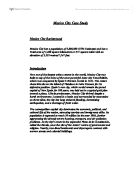What are the challenges that face Zimbabwe today?
There is racial divide as only 2% of the population is white; of the majority black population 71% are Shona and 16% Ndebele.
The country is now effectively bankrupt. Social service provision is in decline and unemployment is running at 60%. From being self sufficient in basic food stuffs it is estimated that in 2003/2004 only one third of its main staple food maize will be available. Half the population are said by an O.E.C.D. Report (2003) to be facing starvation without outside aid.
There are spatial inequalities such as at the periphery. The World Bank (1999) estimated the 6 million population in the communal lands live on less than an average of 1US$ a head per day and that 58% live under the poverty line compared with 8% in the core. The periphery lacks urbanisation, rail and road networks, power grids, mining estates, manufacturing and various forms of social infrastructure.
From 1990 - to date the government moved away from a direct attempt to address the issue of regional inequalities towards economic policies which benefited the core region but which it was hoped would also bring spread effects to the periphery.
The core is still dominated by a capitalist based and export orientated economy. There is extreme social dualism, 20% of the population command 60% of the country's GDP and are mainly urban based.
Since 2000 an ill thought out Fast Track land reform programme, together with illegal land occupation of white commercial farms, has failed to significantly relieve pressure on communal lands and crippled the commercial agriculture sector which was a main source of food supply and the major source of exports.
Outline the urgent priorities that Zimbabwe faces today.
Reduction of regional inequalities is a central policy under the government's declared principle of ‘Equity with Growth'. They are a result of a combination of interrelated factors: Natural resource disparities and natural events such as periodic drought, Economic forces, core periphery contrasts, a failure of government policies, external factors operating from 1890.
From 1998, and particularly following the controversial 2000 general election, Zimbabwe has been plunged into crisis as a result of a number of factors - periodic droughts, the Aids epidemic, rampant inflation adversely affecting both internal finances and the country's competitiveness in overseas markets and a collapse in all major sectors of the economy.
The crippled commercial agriculture sector which was a main source of food supply and the major source of exports, brought about by the land reform programme. This contributes to widespread food shortages and economic downturn from exports.







